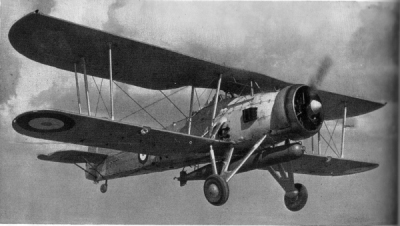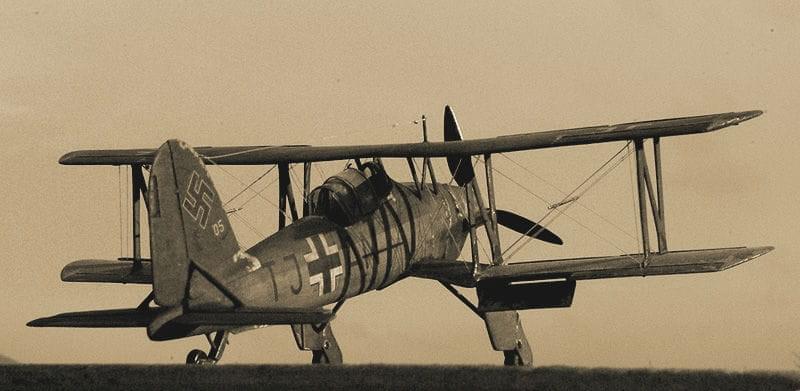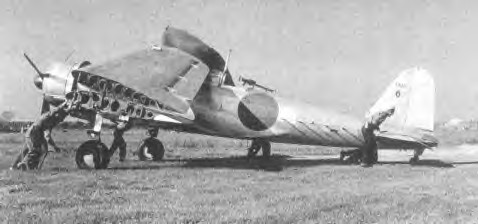marathag
Banned
You should look closer at the stats of the Fi-167 for payload, range and cruising speed. It's very competitive for an early war Torpedo mover.he Fi 167 makes a Douglas Devastator look good.
You should look closer at the stats of the Fi-167 for payload, range and cruising speed. It's very competitive for an early war Torpedo mover.he Fi 167 makes a Douglas Devastator look good.
You should look closer at the stats of the Fi-167 for payload, range and cruising speed. It's very competitive for an early war Torpedo mover.
Since you like metric units, Fi-167 has max takeoff of 4900kg for 45.5m² of wing area and the TBD 4640kg MTO for 39.2m², with 150kw less power than the Fieseler.Take a look at landing gear, arrestor arrangements, and WING LOADING. The Devastator is a Cadillac by comparison. That thing is a flying coffin.
I don't imagine the japanese would have the spare resources to build one for them.
Since you like metric units, Fi-167 has max takeoff of 4900kg for 45.5m² of wing area and the TBD 4640kg MTO for 39.2m², with 150kw less power than the Fieseler.
Less wing loading, with better high lift devices and more power.
Like I said, look closer.
It can hover, should the pilot desire to do that.I did. The Fiesler has a tendency to hang there in mid air and "hover" when she tries to trap. Think about what that means as she attempts to come aboard a flattop in the Atlantic. You want to be able to control the fall and stall when you catch the wire. Plus those spatted narrow set landing fixed landing gear? Want to figure what happens during a rock and roll landing? Ka-BOOM.
Nope.
The Soryu, as originally built, was top-heavy, had idiotic lift arrangements and was a fire and explosion waiting to happen. Even German naval architects would take one look at her and conclude that they they could do better than that piece of junk. Even the Graf Zeppelin looks good next to Soryu.
The difference between a BF109T and Wildcat is so great that I pity the German pilot who tries to fly a BF109T AGAINST a Wildcat. It would be like a Wildcat against a Zero.
The Fi 167 makes a Douglas Devastator look good.
The Ju-87C was no Dauntless either.
I did. The Fiesler has a tendency to hang there in mid air and "hover" when she tries to trap. Think about what that means as she attempts to come aboard a flattop in the Atlantic. You want to be able to control the fall and stall when you catch the wire. Plus those spatted narrow set landing fixed landing gear? Want to figure what happens during a rock and roll landing? Ka-BOOM.
It can hover, should the pilot desire to do that.
Like what the Storch did for pinpoint landings.
That's what STOL does for you. You don't have to land fast, you have great control. Hover isn't ballooning
It has the 2nd lowest landing speed of any WWII Torpedo Plane, 59mph to 46 of the Stringbag, that also had that hover ability
That's the A6M5. Still over 1000 miles range.
And check what the Me-109D in 1939 had for self sealing tanks, just an alloy tanks coated with thin coat of semi vulcanized rubber. That would be fine for pinhole leaks, not rifle caliber rounds. That took multiple layers that were thicker and heavier.
The German bombers of the time had that improved self sealing tanks, but not the fighters.
Only the Soviets were doing the CO2 purging before the War.
German Radio and gunsights, as I pointed out in the past, would have been a welcome addition to any mk Zero.
Ok, finished my summer classes so now I can come back to this. @CalBear , care to offer an opinion if you have time? You're the expert on this sort of thing around here. Could the Japanese have licensed carriers to the Germans?
No doubt Japanese WWII naval architecture left some stuff to be desired, but it's a pretty big stretch to say it's worse than the Graf Zeppelin. That thing was a pile of crap. Permanent list to the side because some idiot put a heavy pair of guns on it, could hold half as many aircraft as the Soryu, twice the tonnage for the same capability...for all the Soryu's issues, the Japanese managed to at least create a useful asset that they got decent mileage out of. Even if the Graf Zeppelin had been completed, the list would have made it almost unusable for flight ops and even if it was it would have been a fleet carrier sized ship with an escort carrier sized load of planes. Usable trumps unusable.
Combat performance tests. US Wildcats in British hands performed extremely well in Bay of Biscay, Western Desert and Norway operations. German planes were splashed and British pilots came home. That is the metric.What basis do you have for saying that it was a far inferior fighter to a Wildcat? I'm skeptical of that purely because the British had Wildcats (well, they called them Martlets) and they weren't used to slaughter Bf-109s en masse. The Bf-109T was an adapted E series, which had about the same performance as the Wildcat in most key respects. Very slightly higher maximum speed, slightly lower maximum service ceiling, and I'm pretty sure the maneuverability was comparable.
[You sure? The Fi-167 was reported to have excellent handling characteristics, could approach at a very low speed, and it had fairly wide fixed landing gear, at least comparable to that of a Swordfish, which had no such issues. From what I understand, the hover was a maneuver that the pilot could perform, but it didn't do that involuntarily or uncontrolled.


.jpg)



Basic self sealing tanks were known to the Japanese in 1939, as was armored seatbacks and bullet proof glass, They just chose not to use them for four years, along with thicker gauge wing skinsThe M5 first flown in August 1943!
If you can near hover, that means you have fine control over pitch, yaw and roll at very low speeds. Fi-167 would be fine at sea, had the Germans ever put a Deck to Sea. Fieseler would do fine, coming from the Storch Note the pilot's visibility to the front, Inline is a bonus here, as wellWhen you trap, you want to be able to control the stall.

These are the vital statistics of Ryujo after she was rebuilt compared to Graff Zeppelin and the Hipper class. The standard displacement is in long tons and the hull dimensions are in metres. The source (Conway's 1922-46) doesn't say what Graff Zeppelin's overall length was.
If they negotiated the licence for the Ryujo class in by the middle of 1935 they could have ordered 2 aircraft carriers of this type in November 1936. ALT Graff Zeppelin could have been laid won in December 1936 instead of the real Graff Zeppelin and ALT Aircraft Carrier B in September 1936 instead of the real Aircraft Carrier B.
The Ryujo class have a realistic chance of being completed in 1939 because they require less steel than the OTL ships and their less powerful machinery aught to be easier to make.
Re-Aircraft Carrier B. I'm going by Whitley in German Aircraft Capital Ships of World War Two who expressly says that she was laid down before Graff Zeppelin and that the date was 30th September 1936. Everyone else says that she was laid down in the slip vacated by Prinz Eugen which was launched on 22nd August 1938. Even if the latter is true there should a 180 metre long slipway available to lay the ALT-Aircraft Carrier B down on.
Meanwhile, the Luftwaffe sends 100 pilots to Japan to train on the IJN's carriers and the Kriegsmarine sends some officers and senior NCOs to serve on the Japanese carriers to get operating experience pending the completion of the 2 German carriers.

I have a hard time believing the GZ would actually be capable of 35 knots.
They could bring back reports of the A6M.
As like to point out, that gives them fighter coverage over Scotland, from Kiel Canal.
Possibly, but I doubt that any would be supplied to the Germans before 1941 because it didn't fly until April 1939 and the first delivery to the IJN was in July 1940.
If the Germans do succeed in completing 2 licence built Ruyjo class aircraft carriers in 1939 their air groups are going to consist of 12 Mitsubishi A5M Claudes purchased from Japan, 24 Fiesler 167 torpedo bombers or 12 Claudes, 12 Fieslers and 12 Aichi D3A Val dive bombers.
What’s that performance like once armor plating, self sealing tanks, and a robust radio have been added? Because I don’t really see the luftwaffe accepting the type into service without any of those things.
That's the A6M5. Still over 1000 miles range.
And check what the Me-109D in 1939 had for self sealing tanks, just an alloy tanks coated with thin coat of semi vulcanized rubber. That would be fine for pinhole leaks, not rifle caliber rounds. That took multiple layers that were thicker and heavier.
The German bombers of the time had that improved self sealing tanks, but not the fighters.
Only the Soviets were doing the CO2 purging before the War.
German Radio and gunsights, as I pointed out in the past, would have been a welcome addition to any mk Zero.
I remember reading that this was done in China after the war and the results were no more than average.
You should look closer at the stats of the Fi-167 for payload, range and cruising speed. It's very competitive for an early war Torpedo mover.
Oh nonsense, they’d take the Germans money and spend it on things related to the China quagmire, then the two carriers they’re building “for them” will end up getting confiscated shortly before completion by the IJN, citing “urgent security needs”. OTL Shokaku and Zuikaku, but paid for by some poor foreign suckers. What are the Nazis going to do, sail their Battlefleet they don’t really have to Kure and threaten to shell the shipyards?
If you can near hover, that means you have fine control over pitch, yaw and roll at very low speeds. Fi-167 would be fine at sea, had the Germans ever put a Deck to Sea. Fieseler would do fine, coming from the Storch Note the pilot's visibility to the front, Inline is a bonus here, as well
Basic self sealing tanks were known to the Japanese in 1939, as was armored seatbacks and bullet proof glass, They just chose not to use them for four years, along with thicker gauge wing skins
Only thing they could not have used in 1939 was the slightly higher HP engine and improved cannon
But they chose minimum weight instead for maximum range and maneuverability
They didn't have to
Gunsights, fine. Radios were funken (spark) heavy. Even at that, I doubt a German radio could be crammed into a Zero. Kind of "big".
